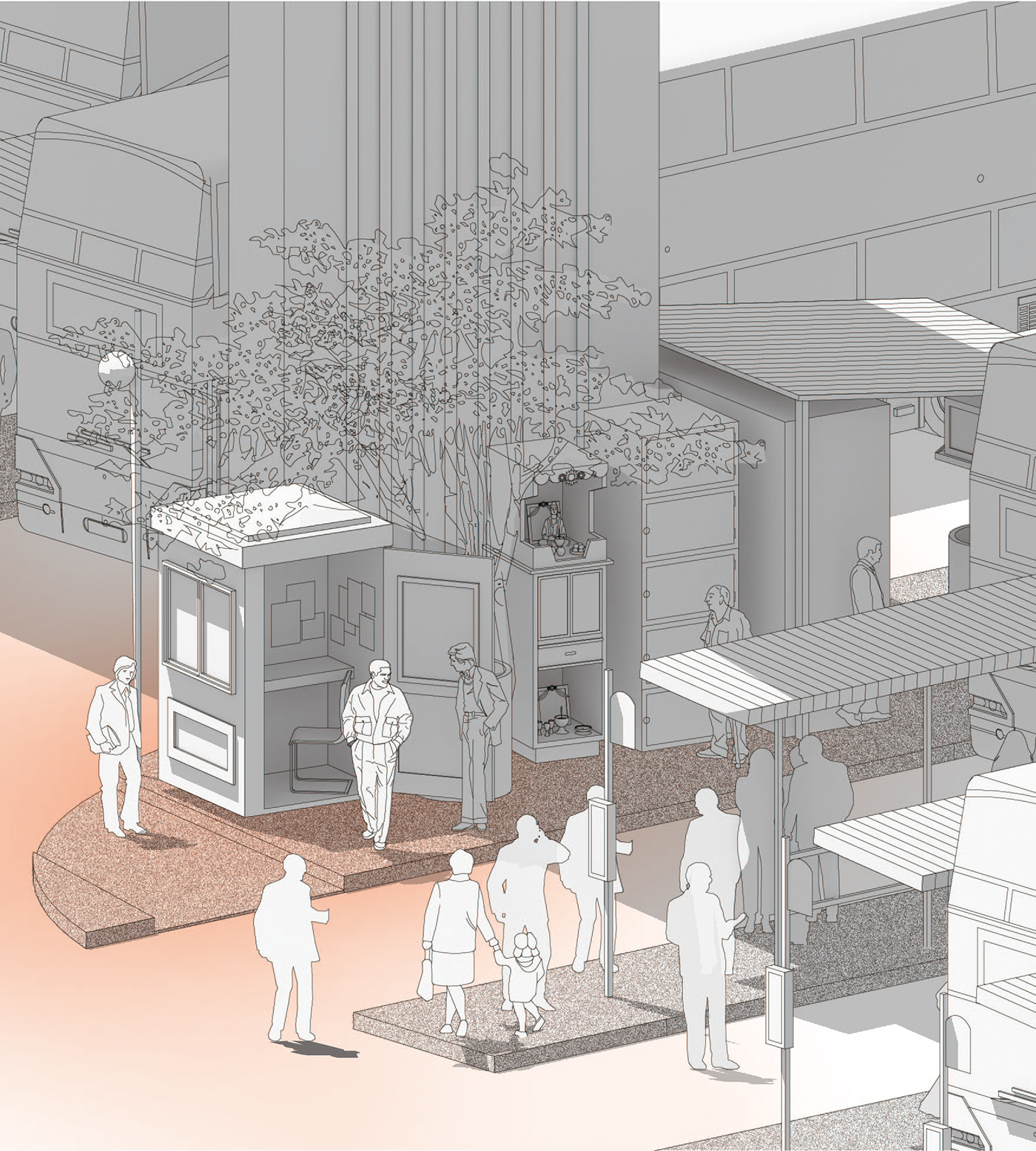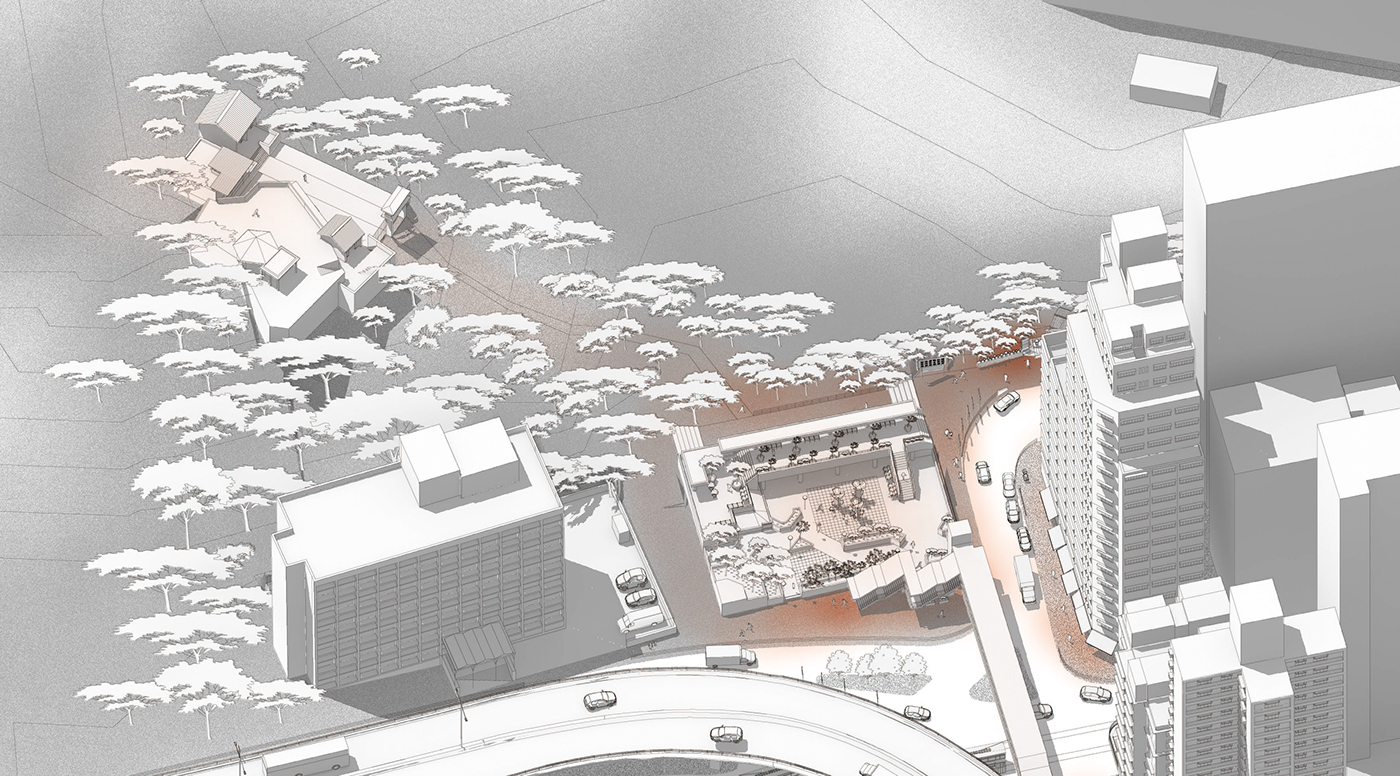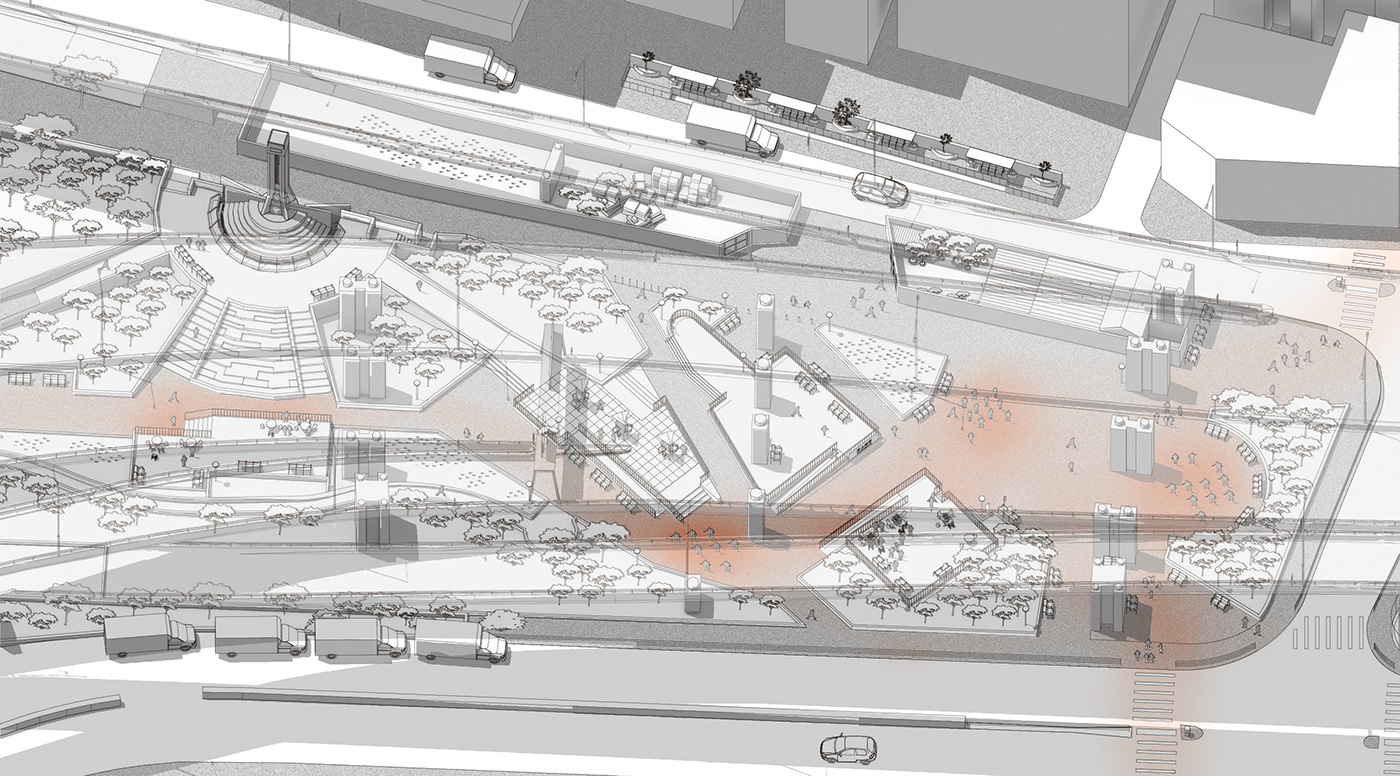
Shau Kei Wan is a hybrid district, simultaneously eroded and artificially reclaimed by man, which sits on the north-eastern part of Hong Kong Island. This relatively “suburban” district, an oxymoron statement given its population in excess of 70,000 who live in a density of approximately 30,000 people/km2, evolved from a 18th Century fishing village into a transformed “genetically modified” reclaimed landscape.
At the heart of the district lies a large residual space, a byproduct of three intersecting infrastructures: the Island Eastern Corridor Expressway, a subsidiary bypass and an elevated pedestrian walkway. These three components combine to define a new topological ground, where: historical traces, residential complexes and infrastructure are woven into a complex urban fabric that seemingly stretches and folds to accommodate all.
The more you look the more you discover in Shau Kei Wan. The conversion of the above-mentioned transport interchange, from a potential wasteland into a thriving and propagating public realm, will here be analyzed. Without being part of any planned urban design masterplan, this redundant condition has become over time a multi programmed dynamic place, with interconnected programmes coexisting with the contiguous surrounding city. A clear example of this coexistence would be the pedestrian walkways that are squeezed between the overpassing viaduct and the underlying street network, that have been colonized by a specific group of the community, i.e. elderly women exercising and practicing Tai-chi.
Every aspect of this three-dimensional urban jigsaw has been surreptitiously adapted to incorporate public amenities. From functional public staircases becoming impromptu terrace for people to rest and watch the evolving daily narratives, to the flyover acting as an integrated bus shelter, life seems to permeate this contingent site. Yet it is only via the slow process mapping the territory, through a process of drawing, that one is fully able to comprehend the complexity of the dynamics at stake. Why is this specific site activated when so many other similar cases remain forgotten? Just as a leather chair retains the physical presence of the occupier long after their disappearance, this site use to sit on the harbour front of Shau Kei Wan, the scene of the local market for more than a century. Once the land was reclaimed and the new infrastructure erected, the collective vestiges of the past daily life reappeared, as if to prove that even if one removes all traces of the physical domain its collective memory persists alive with the community that inhabit it.
Besides this positive instance of a “dynamic” forgotten place, there are many examples within Shau Kei Wan where community engagement is poor and these spaces remain marginalized. A specific instance, a counter example of sorts, is where the same meandering Eastern Corridor Expressway mentioned above, comes into direct contact with the “real” island coast line. Here, multiple manifestations of past physical local history can still be found, in the form of: a local temple, an impromptu ship repair yard and even a vibrant municipal fish market, yet this focalized energy fails to dissipate and infiltrate the surrounding vacant land – the residual remains unincorporated.











